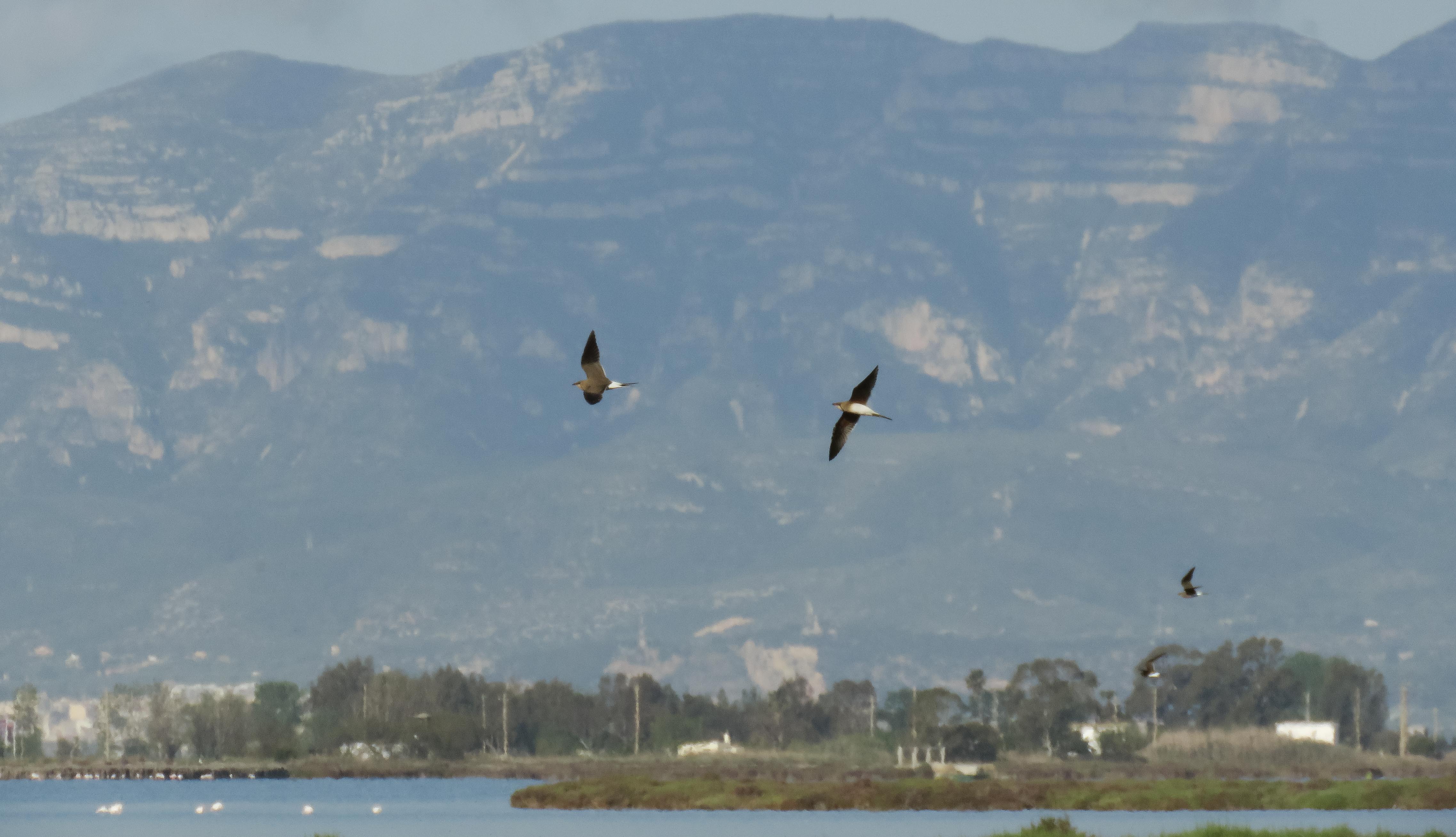Great Crested Grebe 2
Black-necked Grebe 1
Cormorant c.150
Grey Heron c.15
Great White Pelican 1 adult escape
Eastern Great White Egret c.10
Whooper Swan 6
Bewick's Swan c.250
Whistling Swan 2 ex.
Middendorf's Taiga Bean Goose 6 ex.
Wigeon 2
FALCATED DUCK c.200 ex. some males displaying
Teal c.50
Mallard c.75
Spot-billed Duck c.125
Pintail c.300
Shoveler 2
Tufted Duck 1
Smew c.25
Osprey 2
Black-eared Kite c.6
Hen Harrier 1 ringtail
Eastern Marsh Harrier c.4
Buzzard 2
Peregrine 1
Coot c.10
SIBERIAN WHITE CRANE 1 third-winter ex.
Snipe 1
Vega Gull 5
Feral Dove c.25
Oriental Turtle Dove 2
Bull-headed Shrike 6
Large-billed Crow 5
Skylark 1
Brown-eared Bulbul 6
White-cheeked Starling c.35
Dusky Thrush c.10
Tree Sparrow c.20
Japanese Wagtail c.8
Asian Buff-bellied Pipit 10
Oriental Greenfinch 20
Paddyfields at Kobayashi near Narita
After a 12 hour flight we were pleased to see our friend Chris Cook awaiting our arrival at Haneda where we endured a two hour wait for our car rental office to open at 8am. Having missed Siberian White Cranes by the matter of a few hours at Bharatpur a few years ago we were pleased to soon be underway, and after a swift drive to the unprepossessing paddies at Kobayashi, we were more than a little relieved to be greeted by the presence of the wintering third-winter Siberian White Crane feeding in the paddies with a small group of Bewick's Swans all of which are just visible in the above image.
Third-winter Siberian White Crane at Kobayashi
Sporting just a few dark brown feathers on its head, neck and back neatly accords to the description of a third-winter (BWP). Formerly a common winter visitor to Kyushu before the Meiji era, throughout the last century it has been nothing more than a vagrant to Japan (Brazil 1991). Unfortunately Birdlife International treat this species as critically endangered as its current global population of 2,500-3,000 is expected to undergo an extremely rapid decline in the near future, primarily as a result of the destruction and degradation of wetlands in its passage and wintering grounds (TBW).
Falcated Ducks at Lake Inba-numa
After watching the Siberian White Crane for a couple of hours we drove to the nearby large Inba-numa lake where Aki had promised we would find a wintering flock of Falcated Duck along its northern shore. He hadn't mentioned the possibility of there being a couple of hundred present and we enjoyed watching some of the drakes performing their courtship display.
Eastern Great White Egret C. (a.) modestus at Lake Inba-numa
Two forms of Great White Egret occur in Japan, but this, the smaller of the two, probably merits full species status (Brazil 2009). Note its dark grey tarsi and toes wheras albus has pale or bright yellow tarsi and toes (Brazil 2009).
Adult Great White Pelican at Lake Inba-numa
Great White Pelicans are currently considered monotypic and acquire a rosy tint during the breeding cycle (BWP). Whilst recorded as a vagrant in Japan others have been regarded as escapes (Brazil 1991) as with this long-staying individual that has apparently been present for several years at this location, even if somewhat bizarrely, it appears to be making a bid to be taken seriously as a ship-assisted vagrant!! It also looks like it's pinched all of RDME's mistnet poles somewhere along the way!
Middendorff's Taiga Bean Geese at Lake Inba-numa
Whilst watching the Falcated Ducks an unexpected treat in the form of 6 Middendorff's Taiga Bean Geese flew past us and alighted in some nearby dry paddies. Always very wary, unfortunately they did not linger too long. Surprised at their all-dark bills it appears they were covered in dirt from their foraging activities. Whilst at least two forms of Bean Geese occur in Japan, Middendorff's are characterised by their large size, large long bills with their lower mandibles being swollen basally. Whilst middendorffi is currently included within the Taiga complex some authorities suggest it warrants species status.
Motono Hakucho-no-sato Swan Reserve
For the final couple of hours of daylight we visited an area of flooded rice paddies just north of Lake Inba-numa where Swans are fed throughout the Winter. As the Siberian White Crane had been roosting with the Swans we wanted to see it fly into join them as a fitting end to our first day.
Whooper Swans at Motono Hakucho-no-sato
Bewick's Swans at Motono Hakucho-no-sato
Whistling Swan at Motono Hakucho-no-sato
Whistling Swan mostly winter in North America but was first recorded in Japan in 1968 and is now considered a rare winter visitor typically found with flocks of Bewick's Swans. They presumably originate from the population that breed in northeast Chukotka, Russia.
Bewick's, Whistling and Whooper Swans at Motono Hakucho-no-sato
Bewick's Swans arriving to feed at Motono Hakucho-no-sato
Bewick's Swans and Pintail at feeding time at Motono Hakucho-no-sato
Pintail at Motono Hakucho-no-sato
Third-winter Siberian White Crane arriving to roost at Motono Hakucho-no-sato



























































